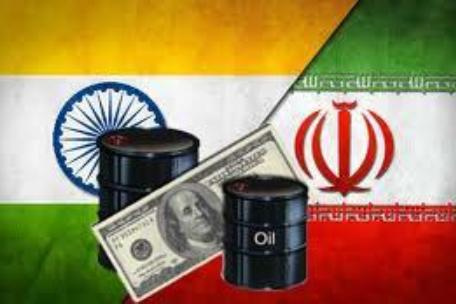Time to Lower the Tensions

Mandana Tishehyar
Five billion dollars. India’s oil debt to Iran was large enough to find its way to the top of global news in recent days. Tension between two major Asian countries over energy deals is escalating. But this is not a new story. Since New Delhi and Washington signed a historical nuclear contract in 2006, India committed itself to align with the United States policy of isolating Iran through sanctions. As the first step, the Peace Pipeline-- which was supposed to transfer the South Pars Field’s gas to India through Pakistan-- went up in smoke, despite all the empty promises by the Indians about their commitment to the project. Next, India’s refinery industry -the fifth most powerful in the world- refused to sell petroleum to Iran. Four years after the nuclear deal with Washington, in December 2010 the Indians claimed that they couldn’t pay for their oil purchases from Iran due to the US- and EU-imposed monetary sanctions on Iran. Iran’s patience exceeded the limit and in July 2011 the country announced its decision to enforce a 90K barrel per day cut in its oil exports to India and an eventual freeze in sales if India still refused to hand over the indebted cash.
The tough stance adopted by both sides will come at a price. Let’s do some math: India is the fourth largest energy consumer following the US, China and Japan, and oil constitutes 24% of the country’s consumed energy, roughly amounting to 3.4 million barrels per day. Indian refineries are able to produce only 880 thousand barrels daily, so the country needs to import the remaining 2.1 million barrels. Seventy percent of the imports come from the Persian Gulf oil-producing countries, with Iran providing 12% of the country’s needs with 400 thousand barrels per day.
Thus, if Iran adopts its decision to stop exporting oil to India, New Delhi will need to immediately search for a replacement. Saudi Arabia is the first choice. The Saudis have announced their agreement with New Delhi’s request for an additional 3 million barrels per day of imports for August 2011. Riyadh has grasped the opportunity to exploit the gap between Tehran and New Delhi to its own advantage. Though Saudi officials have claimed they are not looking to take away Iran’s share of the oil market, with every barrel sold at 100 dollars, they will pocket 300 million dollars of Iran’s revenue, and that’s just in August.
The deal between Riyadh and New Delhi means a 25% cut in Iran’s exports to India. Meanwhile, in New Delhi the politicians are thinking of replacing Iran with the UAE, Kuwait or Iraq if their long-time trade partner insists on collecting its money. Perhaps the Indians are basking in the memory of Obama’s sweet words uttered on his trip to the country last year, when the US president spoke of their right to have a permanent seat in the UN Security Council. Spicing up the pressure on Iran can sound quite flattering to their American friends. Iran, on the other hand, has its own dreams. There are always Chinese friends who would be more than happy to import more energy from the country. An idealistic attitude mixed with an over-reliance on China has spoiled the broth insofar as raising criticism, even by tacit supporters of foreign policy inside the country.
Sweet oriental dreams aside, it would serve both Tehran and New Delhi better to not rely on the tempting offers of third parties who love to fish in troubled waters, though the question remains what mechanism Tehran and New Delhi can define to circumvent the problem of sanctions.
* Mandana Tishehyar is the editor-in-chief of the bi-annual journal of International Politics.

